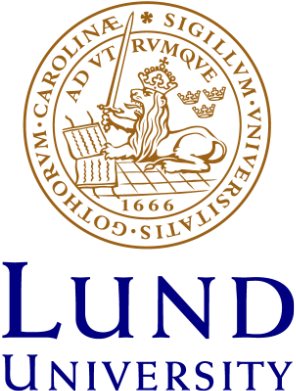Search results
Filter
Filetype
Your search for "*" yielded 533614 hits
New remission criteria for RA: 'modern times' in rheumatology--not a silent film, rather a 3D movie.
Svenskans aktionsarter : en analys med särskild inriktning på förhållandet mellan aktionsarten och presensformens temporala referens.
I uppsatsen jämförs nio olika aktionsartsmodeller och föreslås därefter en modell för svenskans aktionsarter. Modellen kopplas till språkliga kriterier och testas mot ett autentiskt material. Uppsatsen ger en grundlig genomgång av internationella och inhemska aspekt- och aktionsartsmodeller samt diskuterar en rad av ämnets teoretiska kärnfrågor. Samtidigt ges en samlad genomgång av de språkliga da
Hyperbaric oxygen therapy improves health-related quality of life in patients with diabetes and chronic foot ulcer.
Adjunctive treatment with hyperbaric oxygen therapy has recently been shown to improve ulcer healing in patients with chronic diabetic foot ulcer. The aim of the present study is to evaluate whether hyperbaric oxygen therapy improves the health related quality of life in these patients.
Den svenska skaldekonstens fader och andra Stiernhielmsstudier
Automated Bone Scan Index as a quantitative imaging biomarker in metastatic castration-resistant prostate cancer patients being treated with enzalutamide.
Having performed analytical validation studies, we are now assessing the clinical utility of the upgraded automated Bone Scan Index (BSI) in metastatic castration-resistant prostate cancer (mCRPC). In the present study, we retrospectively evaluated the discriminatory strength of the automated BSI in predicting overall survival (OS) in mCRPC patients being treated with enzalutamide.
Infantile colic, maternal smoking and infant feeding at 5 weeks of age.
BACKGROUND: Many parents seek help from health professionals because of their infants' persistent crying in the early months. The aetiology of this condition, often labelled ;;infantile colic'', is still unclear. AIMS: To assess whether smoking during pregnancy, and/or smoking at infant age 5 weeks, is associated with infantile colic, and to describe how feeding at infant age 5 weeks and smoking a
Jesus -- vår syster och broder
The fact that Jesus was a man is claimed to be problematic from a feministic standpoint. One aspect of what is problematic is that the conception of Jesus as the Christ, representing God, makes the connection between men and God closer that that between women and God. In terms of religious proximity men are given a higher degree of religious proximity and therefore also religious authority by mean
Carotenoid cation formation and the regulation of photosynthetic light harvesting
Photosynthetic light harvesting in excess light is regulated by a process known as feedback deexcitation. Femtosecond transient absorption measurements on thylakoid membranes show selective formation of a carotenoid radical cation upon excitation of chlorophyll under conditions of maximum, steady-state feedback deexcitation. Studies on transgenic Arabidopsis thaliana plants confirmed that this car
Böckernas barn – svikna men starka
Stolthet och fördom
Identification of new microRNAs in paired normal and tumor breast tissue suggests a dual role for the ERBB2/Her2 gene.
To comprehensively characterize microRNA (miRNA) expression in breast cancer, we performed the first extensive next-generation sequencing expression analysis of this disease. We sequenced small RNA from tumors with paired samples of normal and tumor-adjacent breast tissue. Our results indicate that tumor identity is achieved mainly by variation in the expression levels of a common set of miRNAs ra
Rapport från ett seminarium om IAS/IFRS-anpassningen av svensk redovisningsrätt
Application of nitric oxide measurements in clinical conditions beyond asthma.
Fractional exhaled nitric oxide (FeNO) is a convenient, non-invasive method for the assessment of active, mainly Th2-driven, airway inflammation, which is sensitive to treatment with standard anti-inflammatory therapy. Consequently, FeNO serves as a valued tool to aid diagnosis and monitoring in several asthma phenotypes. More recently, FeNO has been evaluated in several other respiratory, infecti
"Neurodermitis": Kerstin Cmelka och filmen som pharmakon
An analysis of three experimental films by Austrian filmmaker and artist Kerstin Cmelka (b. 1974): Neurodermitis (1998), Mit mir (2000) and Et in Arcadia ego (2000).
Seriemördare: från proletärmonster till smart lyxlirare
Kulturartikel om förändringen från 1960-talet till 1990-talet i metaforiken kring psykopater och seriemördare på film.
Routine diagnostic patch-testing with formaldehyde 2.0% (0.6 mg/cm2) may be an advantage compared to 1.0%.
Our clinical experience has suggested that the presently recommended patch-test concentration (1.0%) for formaldehyde in the baseline series might be too low. Therefore, consecutively patch-tested dermatitis patients were tested simultaneously with formaldehyde 1.0% and 2.0% (w/v) in aqua. Formaldehyde 1.0% and 2.0% were applied with a micro-pipette (15 microl) to filter paper discs in Finn Chambe
Organiserad brottslighet, ekonomisk brottslighet och terrorism - hänger de samman?
På Berkeley finns ingen graffiti
Changes in forearm bone mass and bone size after menopause - A mean 24-year prospective study.
Objective: Bone loss and periosteal expansion is found after menopause. The accelerated early postmenopausal bone loss is not permanent but if the same accounts for the periosteal expansion is unknown. Methods: Bone mineral density (BMD) and skeletal structure of the distal forearm were followed from menopause and on average 24 years (range 18-28) by single-photon absorptiometry at 12 occasions in
